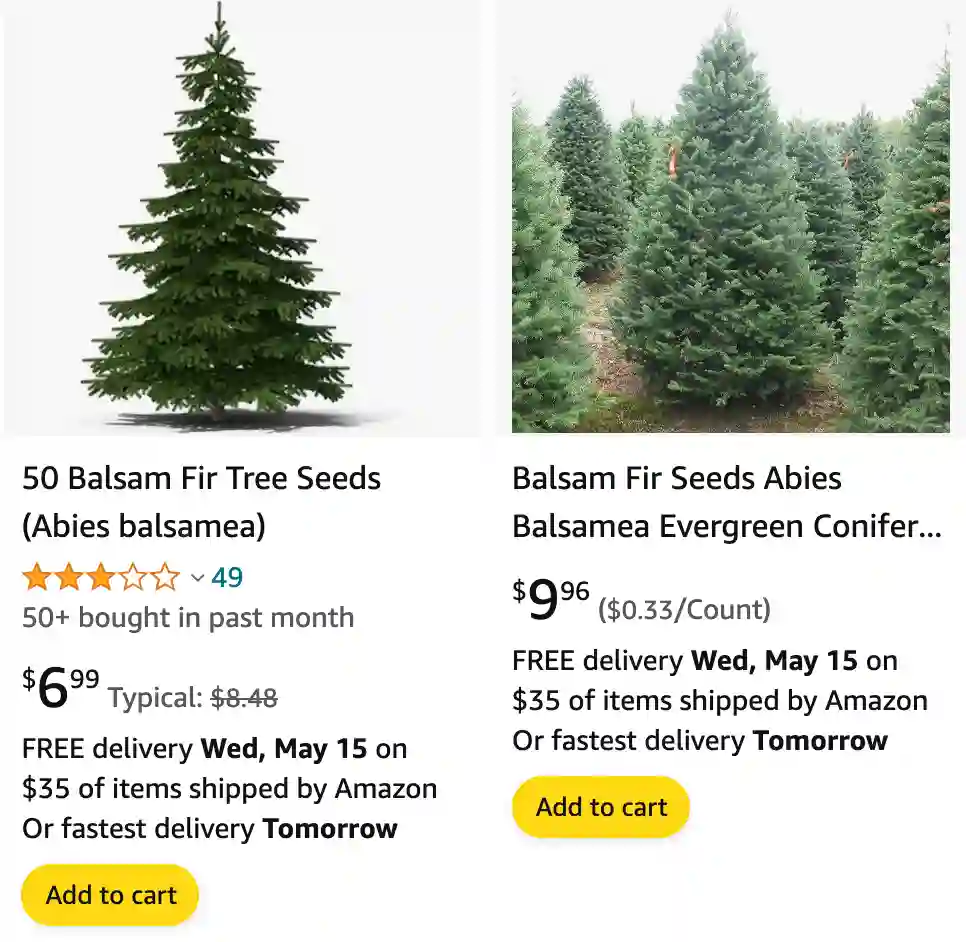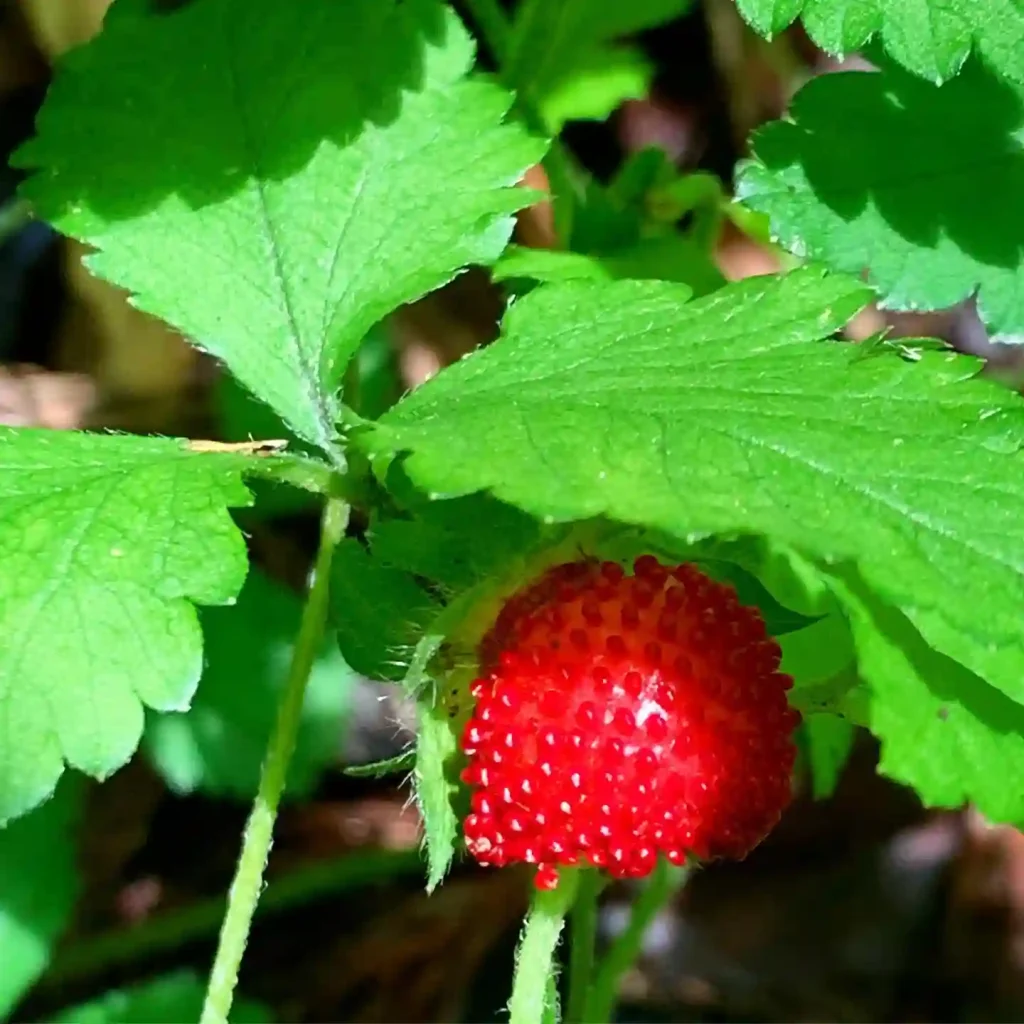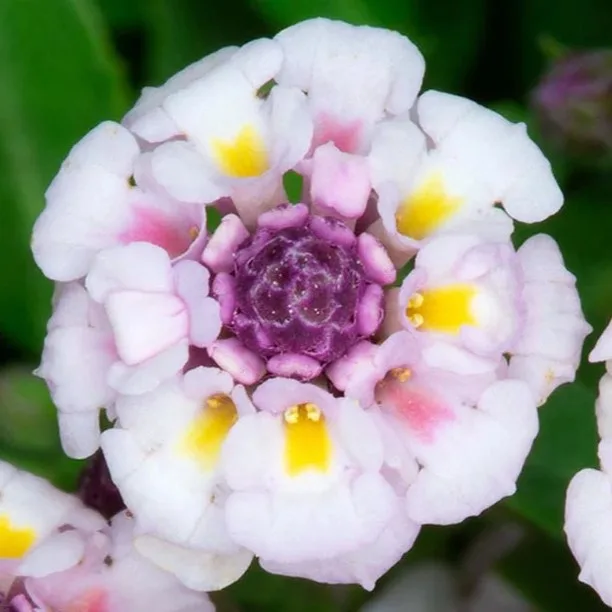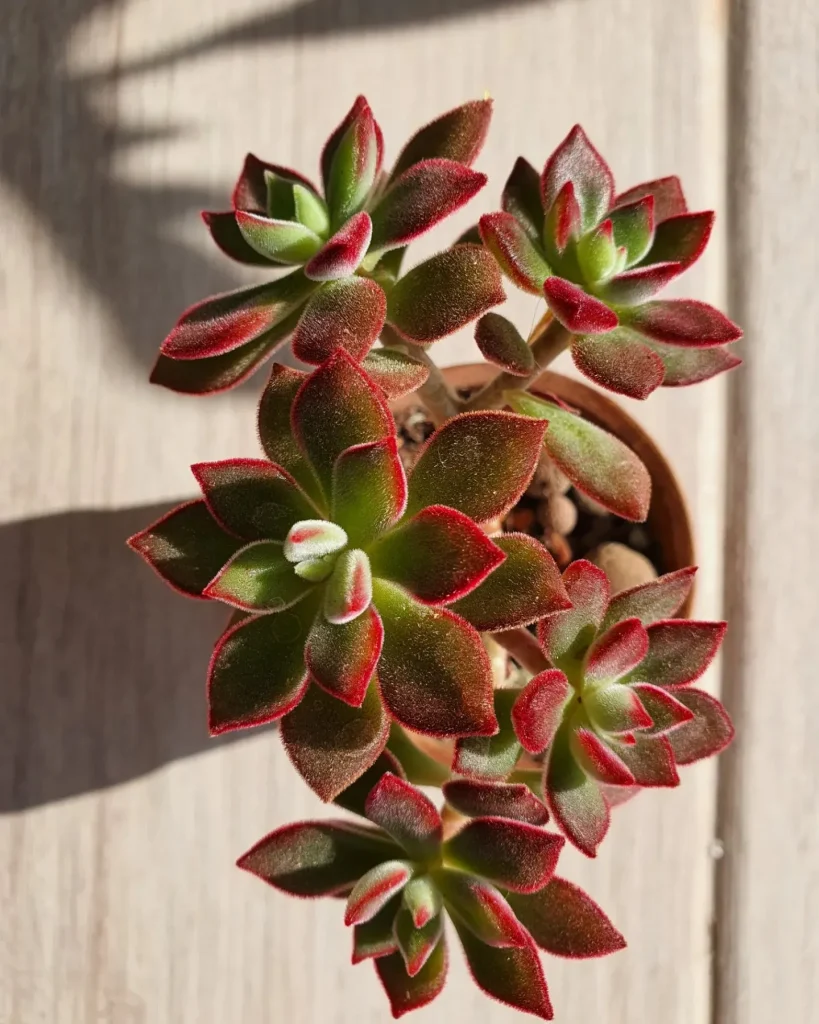
What is balsam fir?
Based on what I’ve seen, balsam fir is a beautiful evergreen tree native to colder regions in North America. They’re these pyramidal conifers with soft, flat needles that have a wonderful spicy-sweet fragrance.
48 Species in Genus Abies
Beyond the aesthetics, though, balsam fir seems to be a useful tree as well.
- Versatile uses: I hear their sap is used in various products, and they’re a popular choice for firewood (though apparently a bit tricky to manage).
- Ecological role: From what I’ve gathered, they provide food and shelter for wildlife, though maybe not the pickiest eaters like deer!
What does balsam fir look like?
Picture a pointy evergreen with short, flat needles that are soft to the touch and a deep, rich green. They grow in a bushy pyramid shape, and if you look closely, the needles have these two whitish stripes running down the underside.
What does balsam fir smell like?
Ah, that’s the good stuff! Balsam fir has this wonderful, refreshing fragrance. It’s kind of spicy and woodsy, but also sweet. When I bring a balsam fir Christmas tree into the house, the whole place smells amazing, like a winter wonderland.
Balsam Fir vs Fraser Fir
I’ve always had a soft spot for the Balsam Fir with its aromatic needles and soft texture. However, I can’t deny the Fraser Fir’s perfect shape and sturdy branches make it a top choice for my Christmas tree. The Fraser’s needles stay put longer, which means less sweeping for me over the holiday season.
Balsam Fir vs Douglas Fir
Choosing between a Balsam Fir and a Douglas Fir is a tough call. The Balsam’s scent is something I absolutely love, bringing a nostalgic holiday feel. But the Douglas Fir’s needles are softer and longer, which makes it great for decorating, especially when I have heavier ornaments.
Balsam Fir vs Noble Fir
The Balsam Fir’s fragrance is unbeatable in my opinion, but the Noble Fir has a special charm with its unique blue-green needles. I love how the Noble Fir’s branches are so sturdy and spaced out perfectly for hanging decorations. It feels like a more regal choice for special occasions.
Balsam Fir vs Spruce
Balsam Fir wins for me when it comes to scent and softness of the needles. However, Spruce trees, especially the blue spruce, have this striking, silvery-blue color that stands out. Though, I have to be careful with Spruce needles as they can be quite sharp when decorating.
Balsam Fir vs Canaan Fir
Comparing a Balsam Fir to a Canaan Fir is interesting because they’re quite similar. The Balsam’s strong scent is always a win for me, but the Canaan Fir has slightly better needle retention. I often find the Canaan to be a bit more adaptable to different climates, making it a reliable option.
Balsam Fir vs Eastern Hemlock
The Balsam Fir’s festive aroma is something I look forward to every year, whereas the Eastern Hemlock offers a different kind of beauty with its delicate, feathery needles. Hemlocks are great for natural-looking decorations, but I always miss the distinctive smell of a Balsam Fir.
Balsam Fir vs Grand Fir
The Grand Fir’s needles are incredibly lush and soft, which feels lovely, but the Balsam Fir’s classic Christmas tree scent is what draws me in every time. I also find the Balsam Fir easier to find in local markets, making it my go-to choice more often than not.
Balsam Fir vs Pine
Pine trees have a rugged charm with their long needles and sturdy branches, but the Balsam Fir’s scent and softer texture win me over. Pines are great for outdoorsy, rustic settings, but for indoor holiday vibes, I always lean towards the fragrant Balsam Fir.
Balsam Fir vs White Fir
The White Fir’s silver-blue needles are beautiful and add a unique touch to my holiday décor. However, the Balsam Fir’s strong, traditional pine scent is something I can’t resist. The White Fir’s needles are slightly less soft, but their unique color often tempts me to try something different.
Where do balsam fir trees grow?
I’ve mostly seen them up north in colder areas. They seem to like places with plenty of moisture, like near forests or swamps.
Are balsam firs good christmas trees?
Definitely! They have that beautiful conical shape, fragrant needles, and they hold their decorations well.
Is balsam fir safe for cats?
This one I wouldn’t recommend. I’ve heard balsam fir oil can be irritating to cats, so best to avoid it altogether.
What is the difference between balsam fir and fraser fir?
Picking a Christmas tree can be a tough decision, and both balsam and fraser firs are popular choices! Here’s how I tell them apart:
- Looks: Balsam fir has a denser, bushier shape with shorter, flatter needles. Fraser fir is known for its near-perfect conical shape and slightly longer, softer needles that are a silvery-green color compared to balsam fir’s darker green.
- Strength: Balsam fir branches are a bit more flexible, which can be good for lighter ornaments but might not hold heavier ones as well. Fraser fir wins for sturdiness, making it a great choice for a tree loaded with decorations.
- Scent: They both have that wonderful Christmas tree aroma, but balsam fir’s fragrance is spicier and stronger, while fraser fir has a milder, sweeter scent.
Ultimately, the best choice depends on your priorities. If you love the traditional, strong balsam fir smell, that might be your winner. But if you want a picture-perfect tree with sturdier branches for heavy ornaments, then the fraser fir could be the way to go.
Are balsam fir deer resistant?
Not entirely. Deer seem to find balsam fir somewhat palatable, especially in the winter when other food sources are scarce.
Do balsam firs shed?
Yes, they do. They have flat needles that tend to stay on the tree longer than some other firs, but you’ll still find some dropping, especially if the tree dries out.
Does balsam fir oil repel mice?
There’s some talk about this, but the evidence seems mixed. It might have a mild deterrent effect, but it’s probably not a guaranteed solution.
How big does a balsam fir get?
In the wild, they can grow up to 80 feet tall! But don’t worry, your Christmas tree won’t reach those heights. They typically max out around 6-8 feet when grown for commercial purposes.
How far apart to plant balsam fir trees?
This depends on the desired mature size. For a windbreak, you might plant them as close as 6 feet apart, but for individual trees with good branching, 15-20 feet seems to be the recommendation.
How fast do balsam fir trees grow?
They’re considered slow to moderate growers, adding maybe 6-12 inches per year.
How long do balsam fir trees live?
In ideal conditions, they can live for 100 years or more!
How to burn balsam fir incense?
I haven’t tried this myself, but apparently you can break off small pieces of dried needles or cones and burn them on a bed of charcoal.
How to dry balsam fir needles?
I’ve seen people tie loose branches in bunches and hang them upside down in a cool, airy place out of direct sunlight.
How to keep balsam fir fresh?
Keeping your tree well-watered and in a cool location seems to be key. Some people recommend using a commercial Christmas tree preservative.
How to make balsam fir essential oil?
This is a complex process that requires specialized equipment. There are plenty of producers who sell balsam fir essential oil, so it might be easier to just buy some.
How to make balsam fir pillows?
Having homemade balsam fir pillows around your house sounds wonderful! Here’s how I would tackle making them, based on what I’ve read:
- Gather your supplies: You’ll need fabric for the pillowcase (choose something breathable like cotton), scissors, needle and thread (or a sewing machine if you have one), and of course, balsam fir needles.
- Prepare the balsam fir: This depends on whether you have fresh or dried needles.
- Fresh needles: If you have access to fresh balsam fir branches, you’ll want to chop them up into small pieces using sharp scissors or pruning shears. The finer you chop them, the less prickly the pillow will be.
- Dried needles: If you’re using dried needles, you might not need to chop them as much, but it can still help to break them down a bit for a more comfortable pillow.
- Make the pillowcase: Decide on your desired size and cut two squares of fabric accordingly. Sew three sides together, leaving one side open for stuffing.
- Stuff the pillow: Here comes the fun part! Pack the chopped balsam fir needles into the pillowcase as tightly as you can. Remember, the needles will shrink as they dry, so a well-stuffed pillow now will be perfect later.
- Close it up: Once you’re happy with the amount of stuffing, hand-sew the opening shut. You can even add a cute ribbon loop for hanging if you’d like!
Tips:
- Consider adding a layer of hypoallergenic batting between the fabric and the balsam fir for extra comfort.
- If you find the balsam fir fragrance too strong, you can mix in some dried lavender or other calming herbs with the needles.
- Let the finished pillow air out for a few days before using it to allow the balsam fir scent to mellow a bit.
Enjoy your homemade balsam fir pillows! They’ll add a lovely touch of wintery fragrance to your home.
How to plant balsam fir seedlings?
Planting balsam fir seedlings can be a rewarding experience, but it requires some patience as they’re slow growers. Here’s how I’d approach it based on what I’ve learned:
- Timing is key: Spring or early fall are the best times to plant balsam fir seedlings. This gives them a chance to establish a strong root system before the harsh winter or summer heat.
- Pick a perfect spot: They prefer cool, moist locations with full sun for at least 4-6 hours a day. Avoid low-lying areas where water might pool.
- Prepare the planting hole: Dig a hole that’s 2-3 times wider than the root ball of your seedling and just deep enough to accommodate the roots without burying the stem. Loosen the soil at the bottom of the hole to encourage root growth.
- Gently loosen the roots: Carefully remove the seedling from its pot and gently loosen any tightly bound roots. This will help them spread out and establish themselves better in the soil.
- Plant your seedling: Place the seedling in the hole and ensure the root flare (the area where the trunk widens at the base) sits slightly above the soil level.
- Fill the hole and water deeply: Backfill the hole with the removed soil, gently tamping it down to remove air pockets. Water the seedling thoroughly to soak the surrounding soil.
- Mulch around the base: Apply a 2-3 inch layer of organic mulch, like shredded bark or wood chips, around the base of the seedling. This will help retain moisture, suppress weeds, and regulate soil temperature.
- Water regularly: Especially during the first year, keep the soil consistently moist but not soggy. Water deeply once or twice a week, depending on the weather conditions.
- Spacing matters: If you’re planting multiple seedlings, consider their mature size. For individual trees with good branching, space them at least 15-20 feet apart.
- Be patient and enjoy! Balsam firs are slow growers, so don’t expect instant results. With proper care and patience, your seedlings will mature into beautiful, fragrant trees that you can enjoy for years to come.
Is balsam fir essential oil safe for dogs?
Just like with cats, I would avoid using balsam fir essential oil around pets. It’s best to consult a vet for advice.
Is balsam fir good firewood?
I’ve heard it burns hot and fast, but throws off a lot of sparks. So, it might be best for experienced firewood users.
If i die, water my plants!



